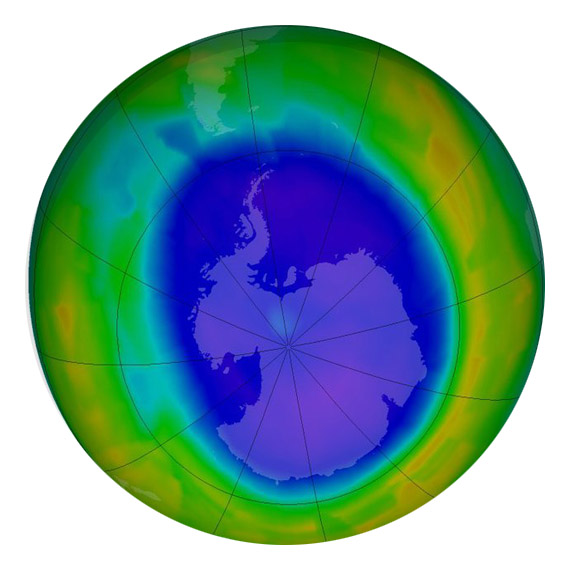Ozone at lower latitudes is not recovering

In the 1970s, it was recognised that chemicals called CFCs, used for example in refrigeration and aerosols, were destroying ozone in the stratosphere. The effect was worst in the Antarctic, where an ozone ‘hole' formed. In 1987, the Montreal Protocol was agreed, which led to the phase-out of CFCs and, recently, the first signs of recovery of the Antarctic ozone layer. The upper stratosphere at lower latitudes is also showing clear signs of recovery, proving the Montreal Protocol is working well.
However, despite this success, scientists have today revealed that stratospheric ozone is likely not recovering at lower latitudes, due to unexpected decreases in ozone in the lower part of the stratosphere. "The bottom part of the ozone layer at more populated latitudes is not recovering. The cause is currently unknown", says FMI´s research professor Erkki Kyrölä. One suspected reason is that climate change is altering the pattern of atmospheric circulation. The other possibility is that very short-lived substances (VSLSs), which contain chlorine and bromine, could be destroying ozone in the lower stratosphere. VSLSs include chemicals used as solvents, paint strippers, and as degreasing agents. One is even used in the production of an ozone-friendly replacement for CFCs. "It was thought that very short-lived substances would not persist long enough in the atmosphere to affect the ozone, but more research is still needed."
The study was conducted by researchers from FMi but also institutions in Switzerland, the UK, the USA, Sweden and Canada. Research included also data gathered by satellite missions.
More information:
Research professor Erkki Kyrölä, erkki.kyrola@fmi.fi
Researcher Viktoria Sofieva, viktoria.sofieva@fmi.fi
